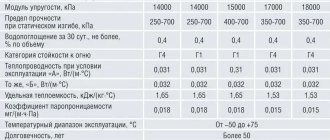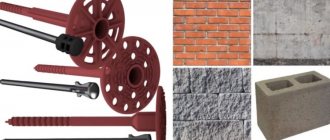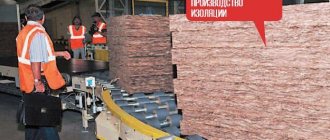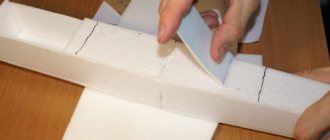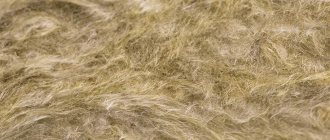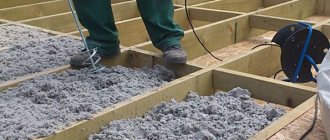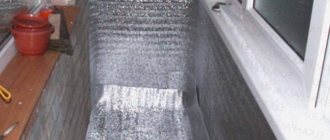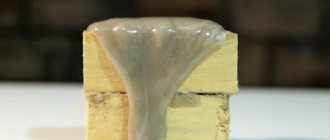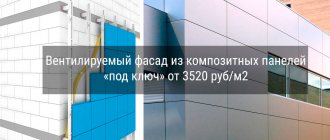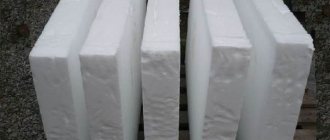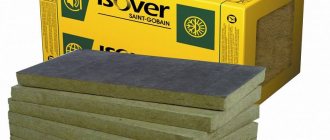Hello, dear readers!
How are you? Are you ready for the cold? Have you warmed up? Today I came across an article that, to put it mildly, puzzled me. It said that this winter would be very vigorous. That is, frosty and snowy. Well, what can we say? There are both advantages and disadvantages to this. The positive aspect is the fun entertainment - sleds, skates, skis, snowballs. And negative - heating the house will cost a pretty penny. In order not to be speechless when looking at the amount on the receipt, it is recommended to insulate the “nest”. Fortunately, there are plenty of materials for insulating a room.
I decided to look at what manufacturing organizations are offering today. My attention was drawn to the “old new” raw material – foam glass. Why "old new"? Well, how can I explain it to you? The old one is 86 years old, and the new one is improved. However, let's study the material in more detail. So, here’s a topic for you - foam glass: disadvantages, advantages, production, cost and much more. Shall we begin? Go!
Cellular glass: product features
A little history
Foam glass was invented by the honored worker of technology and science Isaac Ilyich Kitaygorodsky. The professor specialized in glass production technology, because he considered it the material of the future. The professor's invention was improved by US specialists in the 40s. Initially, foam glass was used as a floating material. But it soon became clear that it demonstrates excellent heat and sound insulation properties, is easily glued together, and is easy to process. Therefore, it was decided to use it in construction.
Thus, in Canada a building appeared, created from concrete slabs with a layer made of cellular glass. This event happened back in 1946. The experiment was very successful. The material has received well-deserved recognition. But, to the great regret of the inventor, it did not gain popularity in Soviet countries, since the cost was high and the production technology had not been developed. It was manufactured in the USSR, but the quality of the product left much to be desired, which led to the closure of factories.
But currently the production of this product is in full swing!
Concept
Balcony insulation
Foam glass is a heat-insulating material made from silicate glass and raw materials that promote gas formation. The insulation is often called foamed or cellular glass because it has a honeycomb-like structure. Due to this, it can boast of unique properties.
Production
Thermal insulation raw material - foam glass - is manufactured using powder technology. The process is quite simple, but labor intensive. It consists of the following steps:
- broken silicate glass is crushed;
- the crumbs are thoroughly mixed with gas-forming substances;
- the charge (homogeneous mass) is placed on a conveyor belt or in molds and sent to the oven;
- the glass softens, turning into a liquid but viscous mixture;
- under the influence of gases the gruel foams;
- the mixture cools slowly;
- the product is formed into blocks, slabs (sheets) or granules;
- the product is processed according to requirements;
- slabs, granules or blocks of foam glass are packaged.
We can say that ordinary glass, which is used in everyday life, and the cellular product are twins, since they are identical in composition, the only difference being the gas-filled pores of the foamed product.
Only high-quality materials and innovative equipment are used to produce blocks, granules or slabs. In addition, the products undergo control, which is carried out by experts in accordance with European quality standards.
Some tips from Homius.ru on installing foam glass
The use of such material in various fields has its own nuances that cannot be ignored. Let's consider its use for heat and sound insulation of walls, roofs and attic floors.
Insulation of two-layer and three-layer walls
For such work, slabs are used that are shaped like penoplex. They are mounted identically. Foam glass is glued to the surface of a brick or concrete wall using special building mixtures. Expandable plastic dowels or anchors can also be used for fixation. After installation, the surface can be plastered and painted, lined with siding, tiles or natural stone.
This material can be used for both exterior and interior decoration.
Granulated foam glass is used for three-layer structures. It is poured into the voids between two walls. This allows you to create a breathable surface, however, the vapor permeability in this case will be higher, which should be taken into account. This can be fixed if you use foam glass blocks during construction. In this case, you can paste them over the first layer, and then lay out the second layer with bricks.
Three-layer wall - granulated foam glass is used for it
Attic floors or roofing
Foam glass is ideal for insulating wooden or concrete attic floors. The blocks fit perfectly on any surface, which, when using adhesive building compounds, creates a monolithic layer that protects against heat leakage and the penetration of extraneous sounds.
This material also performed well when insulating the roof of attic rooms. Here the slabs are laid between the outer covering and the waterproofing layer. The blocks must be glued together, which will additionally prevent the penetration of moisture and heat loss from the room.
The use of foam glass for insulation of attic and attic spaces:
Helpful information! Foam glass can be used as a layer between concrete floors and laminate flooring or parquet. However, it should be understood that if the floor is made of wood, deformation under load is possible, which will lead to breaks and cracks in the blocks.
Attic floors can also be insulated using granulated foam glass, but this method requires additional finishing with wood, plywood or chipboard and is used quite rarely.
Kinds
Today there are two types of foam glass - granular and block.
In addition, there are three types of granular insulation:
- foam glass gravel;
- foam glass crushed stone;
- foam glass sand.
There are also three types of block insulation:
- slabs (foam glass sheets);
- blocks;
- shells (shaped foam glass).
If we compare the thermal properties of granulated and block glass, of course, gravel, crushed stone and sand are inferior to slabs, shells and blocks. But, nevertheless, granular insulation is more popular due to its relatively low price.
Comparative cost of foam glass and other insulation materials
| Insulation materials | Cost of 1 m3, rub. |
| Foam glass in products (slabs, blocks, moldings) | 4300–5500 |
| Foam glass in granules | 2000–3130 |
| Expanded polystyrene | 1540–2400 |
| Mineral wool | 1050–1200 |
| Mineral plate | 4300–5600 |
| Basalt slab | 4100–5450 |
| Basalt wool | 2100–2600 |
| Bulk expanded clay M400 | 800–900 |
| Foam concrete blocks | 1700–2600 |
Scope of application
Foam glass, due to its properties, is used for insulation:
- private houses;
- outbuildings;
- sports complexes;
- underground structures;
- industrial buildings;
- medical institutions;
- educational institutions;
- office facilities;
- recreational facilities - (for example, for baths, water parks, etc.).
The scope of application of the material is very wide, since the thermal insulation material is impeccable:
- to insulate the ceiling: the attic floor is filled with cement-sand mortar, and then the slabs are laid, after which a reinforcing screed is made;
- for walls: the surface is prepared, special glue is applied, the product is applied, pressed tightly and covered with plaster;
- for the floor: a layer of sand (3–5 cm) is poured, thermal insulation is laid or backfilled, joints are sealed, screed is applied, the covering is installed;
Yes, the material is popular due to its good technical characteristics.
House made of foam glass - how is it used?
Below we will describe all the advantages and disadvantages of this type of building material, and now we will talk about its use. Foam glass blocks are the most common in private construction due to their ease of use and various overall dimensions. The main area of application is building cladding and insulation.
Remember that the blocks have all the qualities of glass in terms of fragility and resistance to vertical pressure. That is, it is impossible to build load-bearing walls from foam glass blocks, those that will absorb different pressures. When creating walls made of foam glass, the principle of laying a load-bearing frame made of monolithic concrete is used, and the constructed surfaces perform only enclosing functions. This method of constructing a cottage is possible, but is almost never used due to the complexity of construction and quite serious financial costs. It is much easier to sheathe brick or aerated concrete walls with foam glass in one layer and cover it with plaster - and there are more benefits, and the costs are not so colossal.
Foam glass blocks are used as insulation in all possible variations. With their help, you can ensure ideal sound and heat insulation of rooms:
- Cladding of external walls and foundation, basement;
- Laying blocks on a flat roof and insulating the attic;
- Floor insulation with installation of foam glass on top of a concrete foundation or ceiling;
- Insulation of any part of the building from the inside, especially technical rooms for boiler rooms and other specialized purposes.
Properties
Cellular glass is famous for the following properties:
- noise absorption – 56 dB;
- water absorption – 0–5%;
- vapor permeability – 0–0.005 mg/m*h*PA;
- thermal conductivity – 0.04–0.08 W/(m*K);
- humidity (sorption) – 0.2–0.5%;
- bending strength – 0.4–0.6 MPa;
- compressive strength – 0.7–4 MPa;
- effective operating temperature – -260 – +400°С;
- actual operating temperature – -260 – +230°С;
- deformation temperature – +450°С.
Based on this data, recognized advantages and annoying disadvantages can be determined.
Advantages
The material has many advantages. Let's look at the main ones.
- Safety. Does not contain substances harmful to the human body.
- Environmentally friendly. Made from environmentally friendly raw materials.
- Hygiene. Has antiseptic properties.
- Durability. Service life - more than 100 years.
- Versatility. It is used for insulation of any buildings.
- High adhesion. Combines with a lot of building materials.
- Biological passivity. He is not afraid of rodents, insects and microorganisms.
- Resistance to the negative effects of climatic factors. He is not afraid of temperature changes, precipitation, UV, etc.
- Resistance to mechanical factors. It does not deform and does not lose its properties, since it can withstand impacts and high loads.
- Unaffected by chemical factors. Does not react to acid.
- Resistance to thermal factors. Foam glass is an absolutely non-flammable insulation material.
- Ease of processing. It cuts perfectly with a regular hacksaw.
The material is worthwhile, but there are drawbacks and there are many of them, unfortunately.
roof insulation with foam glass
Where to buy foam glass in Belgorod
Production (LLC "Building Materials - BelSU")
Proizvodstvennaya (LLC "Building Materials - BelGU") is a manufacturer of thermal insulation materials made of foam glass. Contacts: Russia, Belgorod, Koroleva St. 2a. 8-4722-42-12-63, 8-951-132-3947, 8-920-563-20-01
For more than 11 years, it has been carrying out work on insulation, waterproofing and noise insulation, selling equipment and components for working with polyurethane foam (PPU) and polyurea, conducting PROMOTIONS and carrying out quality control of all manufactured objects. Contacts: +7-903-642-48-18; +7-952-426-42-45,,
Flaws
Of course, every raw material has its negative aspects. Foam glass is no exception. Before purchasing material, you need to carefully study the negative aspects.
- High price. The production of raw materials requires innovative high-tech equipment, which leads to its rise in price. And also the production of foam glass requires high energy costs.
- Fragility. The raw material, despite its strength, is very fragile, which leads to cracking if installation recommendations are ignored.
- Lack of steam conductivity. Foam glass, as was said, is not subject to the destructive effects of biological factors, but the surface under it is easily damaged.
- Fear of alkalis and hydrofluoric acid. Cellular glass, like an aspen leaf, trembles at the “sight” of alkalis and hydrofluoric acid, since they are capable of destroying it.
- Heaviness. The raw materials are relatively heavy, which negatively affects the building structure.
- Durability. Of course, a long service life is a plus. But the materials used to construct the facility are unlikely to last more than 100 years. This means that the structure must be repaired periodically, and cellular glass is not intended to be reused. Which exit? Replacing insulation.
- Low impact strength. Cellular glass does not withstand even light impacts. Mechanical influence is the “death” of the material. Of course, if the insulation is in the structure, it is not afraid of impacts. He is afraid of them during transportation, unloading and installation.
- Impossibility of “reanimation”. If the glass is damaged, it can be taken to a landfill. It is impossible to glue or cover up the cracks.
Properties played a cruel joke on cellular glass, turning a huge number of advantages into disadvantages.

